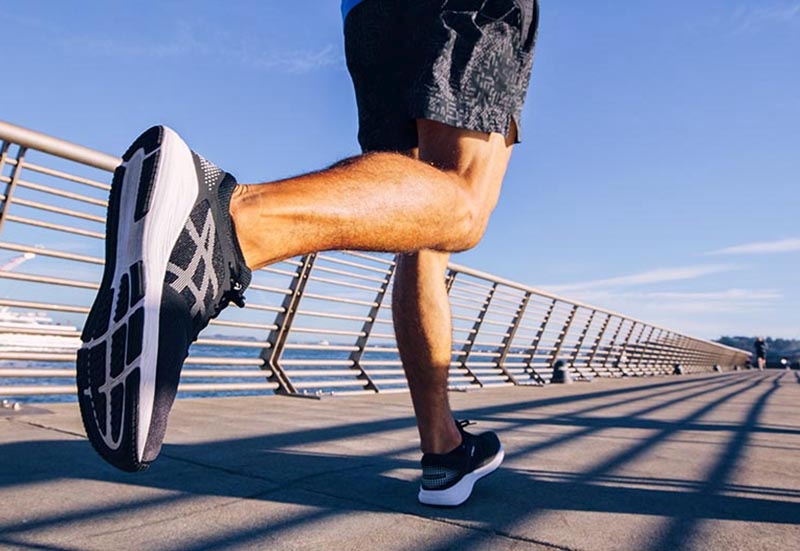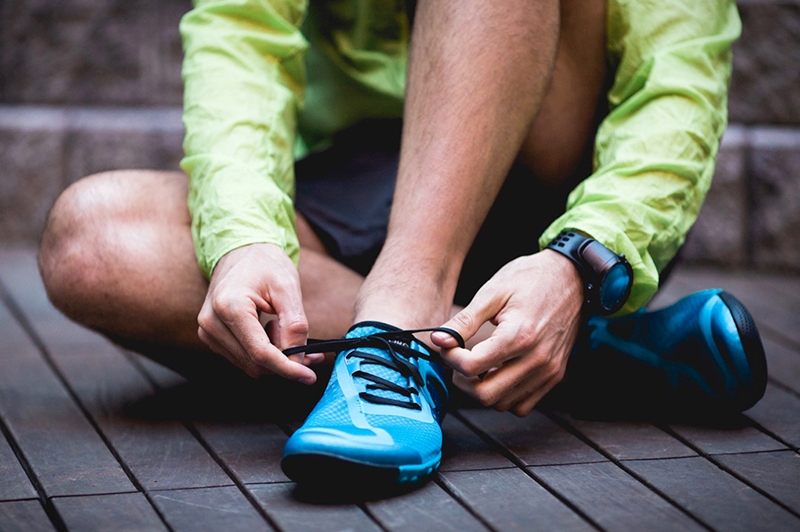You are viewing 1 of your 1 free articles. For unlimited access take a risk-free trial
Economic burden: how much does shoe weight affect running performance?

Running and cycling economy is a hot topic in sport science, and one that Sports Performance Bulletin has discussed extensively over the past couple of years. The reason is simple; all things being equal, a runner (or cyclist) with better economy is able to sustain a higher speed for a given oxygen consumption. And that’s good, because oxygen supply to the muscle during exercise is strictly limited. The more efficiently you use it, the longer and faster you can run or ride without fatigue setting in. This explains why the very best athletes have very high levels of economy. Even better, economy is ‘trainable’ – ie you can improve it with certain types of training. And if you think that improving running economy inevitably involves a long, hard training slog there’s even better news because some recent research suggests that gains can be had with very little effort.
Shoe weight and running economy
In one study, researchers wanted to find out if very small changes in running economy were able to significantly affect distance-running performanceMed Sci Sports Exerc. 2016 Nov;48(11):2175-2180. However, rather than getting the runners to participate in a before training/after training study to improve running economy, they used a different approach which was to change the runners’ shoe weights. On three separate occasions, all of the eighteen runners performed a 3,000m time trial run under identical conditions except for the following:- Trial A - Shoes with no weights added
- Trial B - The same shoes with 100g of weight per shoe added
- Trial C - The same shoes with 300g of weight per shoe added
What they found
When the results were analysed, the first finding was that adding 100g mass to each shoe significantly increased metabolic rate and decreased running economy. Running economy dropped by 1.1% at a running speed of 7.8mph. When 300g per shoe was added, this decreased running economy by around 2.5%. In terms of time trial times, the runners ran 1.36% and 2.37% slower for the +100g and +300g shoes, respectively, showing that this small (negative) change in running economy had produced a significant drop in running performance.Implications for runners
There are two main conclusions we can draw from this research. Firstly, it provides more evidence that running economy has a significant impact on performance, and even small changes of as little as 1% can significantly affect performance. The implication that follows is that pursuing even small gains in running economy is definitely worthwhile. The second conclusion is that the effects of shoe weight on running performance are perhaps underestimated. The difference between a lightweight and heavyweight running shoe can easily exceed 200g, which would result in running economy changes of around 2% - significant for performance - especially over a longer distance event such as a half or full marathon.PRACTICAL SUGGESTIONS
- Invest some training time on improving your running economy. The best way for runners (and cyclists) to achieve this is to add some specific strength training into an endurance programme. This article provides some great guidelines on how to get started.
- Strength sessions should be short and low-volume, high-intensity in nature (6-8 reps per exercise).
- Lower-body exercise such as squats, lunges and leg presses are recommended.
- Try to ensure your high-intensity endurance and strength sessions are performed as far apart as possible to allow maximal recovery in between sessions.
- Remember that shoe weight can be important for running economy and that lighter is better. However, DON'T choose primarily on weight. The biomechanical needs to your feet and running style should be the main determinant. Seek advice from an experienced running shoe retailer if you are in any doubt.
Newsletter Sign Up
Testimonials
Dr. Alexandra Fandetti-Robin, Back & Body Chiropractic
Elspeth Cowell MSCh DpodM SRCh HCPC reg
William Hunter, Nuffield Health
Newsletter Sign Up
Coaches Testimonials
Dr. Alexandra Fandetti-Robin, Back & Body Chiropractic
Elspeth Cowell MSCh DpodM SRCh HCPC reg
William Hunter, Nuffield Health
Keep up with latest sports science research and apply it to maximize performance
Today you have the chance to join a group of athletes, and sports coaches/trainers who all have something special in common...
They use the latest research to improve performance for themselves and their clients - both athletes and sports teams - with help from global specialists in the fields of sports science, sports medicine and sports psychology.
They do this by reading Sports Performance Bulletin, an easy-to-digest but serious-minded journal dedicated to high performance sports. SPB offers a wealth of information and insight into the latest research, in an easily-accessible and understood format, along with a wealth of practical recommendations.
*includes 3 coaching manuals
Get Inspired
All the latest techniques and approaches
Sports Performance Bulletin helps dedicated endurance athletes improve their performance. Sense-checking the latest sports science research, and sourcing evidence and case studies to support findings, Sports Performance Bulletin turns proven insights into easily digestible practical advice. Supporting athletes, coaches and professionals who wish to ensure their guidance and programmes are kept right up to date and based on credible science.












